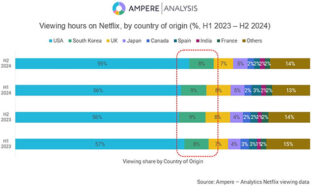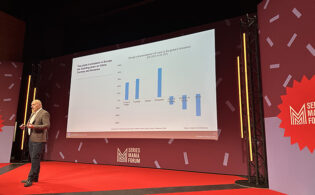More than half of the respondents to a recent Ampere Analysis survey in the U.S. are “super stackers,” subscribing to three or more SVOD services.
In Q3 2020, 45 percent of U.S. internet users between the ages of 16 to 64 surveyed by Ampere had three or more SVOD subscriptions. As of Q1, that number is up to 52 percent, with 13 percent at three services, 10 percent at four services and a whopping 29 percent with five or more services. Ampere found that 16 percent of the 4,000 users surveyed had no SVOD subscriptions, 17 percent had one and 15 percent had two.
Meanwhile, in Canada, among 2,000 respondents, 20 percent had no SVOD services, 29 percent had one, 21 percent two, 14 percent three, 8 percent four and 8 percent five or more.
Original content is the key factor driving subscription stacking, particularly in the U.S., where 49 percent said that is the main reason they pay for a service.
Annabel Yeomans, senior analyst at Ampere Analysis, commented, “As we’ve seen in Europe, there are some big differences in the way people consume TV depending on where they live. In the U.S., TV is a much more important part of daily life and plays a greater role in social interaction than in Canada. Competition among streaming services is also more significant in the U.S. than in Canada. In the last six months, we have seen that this not only impacts stacking rates but also the growing demand for quality original content as streamers battle to engage subscribers and reach new audiences.”






